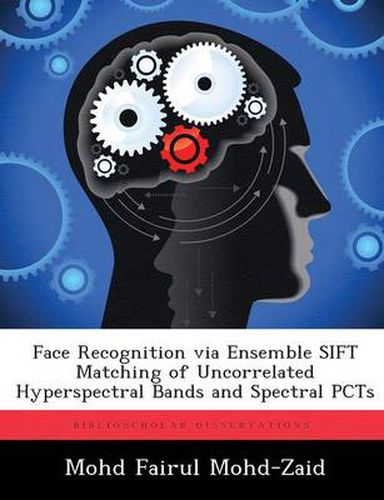Readings Newsletter
Become a Readings Member to make your shopping experience even easier.
Sign in or sign up for free!
You’re not far away from qualifying for FREE standard shipping within Australia
You’ve qualified for FREE standard shipping within Australia
The cart is loading…






This title is printed to order. This book may have been self-published. If so, we cannot guarantee the quality of the content. In the main most books will have gone through the editing process however some may not. We therefore suggest that you be aware of this before ordering this book. If in doubt check either the author or publisher’s details as we are unable to accept any returns unless they are faulty. Please contact us if you have any questions.
Face recognition is not a new area of study, but facial recognition using through hyperspectral images is a somewhat new concept which is still in its infancy. Although the conventional method of face recognition using Red-Green-Blue (RGB) or grayscale images has been advanced over the last twenty years, these methods are still shown to have weak performance whenever there are variations or changes in lighting, pose, or temporal aspect of the subjects. A hyperspectral representation of an image captures more information that is available within a scene than a RGB image therefore it is beneficial to study the performance of face recognition using a hyperspectral representation of the subjects’ faces. We studied the results of a variety of methods for performing face recognition using the Scale Invariant Transformation Feature (SIFT) algorithm as a matching function on uncorrelated spectral bands, principal component representation of the spectral bands, and the ensemble decision of the two. We conclude that there is no dominating method in the scope of our research; however, we do obtain three methods with leading performances despite some trade-off between performance at lower ranks and performance at higher ranksthat outperform the results obtained from a previous study which only considered a SIFT application on a single hyperspectral band which also performs very well under temporal variation.
$9.00 standard shipping within Australia
FREE standard shipping within Australia for orders over $100.00
Express & International shipping calculated at checkout
This title is printed to order. This book may have been self-published. If so, we cannot guarantee the quality of the content. In the main most books will have gone through the editing process however some may not. We therefore suggest that you be aware of this before ordering this book. If in doubt check either the author or publisher’s details as we are unable to accept any returns unless they are faulty. Please contact us if you have any questions.
Face recognition is not a new area of study, but facial recognition using through hyperspectral images is a somewhat new concept which is still in its infancy. Although the conventional method of face recognition using Red-Green-Blue (RGB) or grayscale images has been advanced over the last twenty years, these methods are still shown to have weak performance whenever there are variations or changes in lighting, pose, or temporal aspect of the subjects. A hyperspectral representation of an image captures more information that is available within a scene than a RGB image therefore it is beneficial to study the performance of face recognition using a hyperspectral representation of the subjects’ faces. We studied the results of a variety of methods for performing face recognition using the Scale Invariant Transformation Feature (SIFT) algorithm as a matching function on uncorrelated spectral bands, principal component representation of the spectral bands, and the ensemble decision of the two. We conclude that there is no dominating method in the scope of our research; however, we do obtain three methods with leading performances despite some trade-off between performance at lower ranks and performance at higher ranksthat outperform the results obtained from a previous study which only considered a SIFT application on a single hyperspectral band which also performs very well under temporal variation.